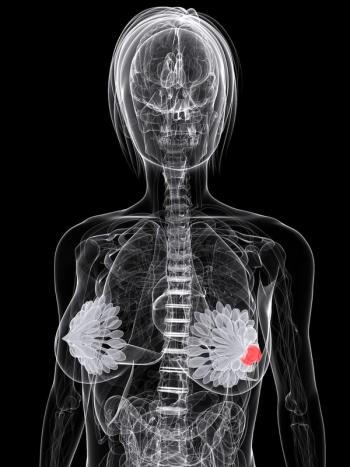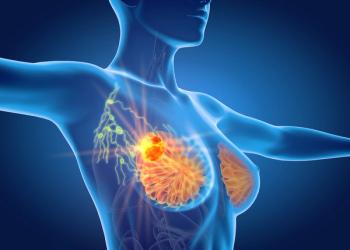
What Is the Impact of the SHARON Trial on Pancreatic Cancer Research?
Kenneth H. Yu, MD, discusses the results from the SHARON trial in pancreatic cancer that were presented at ESMO 2025.
The phase 1 SHARON trial (NCT04150042) assessed melphalan, BCNU, hydroxocobalamin (vitamin B12), and ascorbic acid followed by autologous stem cell transplant for patients with stage IV pancreatic ductal adenocarcinoma (PDAC) or breast cancer who have BRCA1/2 or PALB2 mutations. The full results, presented at the
The trial was set to look at how well the treatment could be tolerated and what the response outcomes would be. For patients with PDAC, a median progression-free survival (PFS) was not reached, and at the median follow-up of 14.2 months, 25% of patients were free from disease at 11, 23, and 42 months.
CancerNetwork spoke with Kenneth H. Yu, MD, a gastrointestinal medical oncologist at Memorial Sloan Kettering Cancer Center in New York, New York, regarding this trial and where the results can propel his team’s future research.
CancerNetwork: What was the rationale for the SHARON trial?
Yu: We were looking at patients with germline mutations and BRCA1/2, and probably 5% to 10% of the patients with pancreatic cancer harbor a germline mutation in one of these genes. These are the most common germline mutations that patients have in pancreatic cancer, and we know that these mutations predispose patients to be more sensitive to DNA repair–targeted chemotherapy agents. Most of these patients receive platinum chemotherapy in the front line, for example, and this targets DNA repair. The rationale for the SHARON trial was that if we could give other DNA-damaging agents—for example, in stem cell transplants, we give drugs like BCNU or melphalan—they can attack the DNA repair mechanism even more potently, we think, than platinum agents. Perhaps these drugs could induce more responses or more durable responses in these patients. That was the rationale for the trial.
What specific response rates and duration of response were observed in the pancreatic cancer cohort for those with inherited BRCA1/2 or PALB2 mutations? How do these preliminary efficacy signals compare with established BRCA-targeted therapies?
The best reference study is the phase 3 POLO trial [NCT02184195], which was looking at patients who, after getting platinum chemotherapy, received a PARP inhibitor or olaparib [Lynparza]. In that trial, patients who were responding to platinum [therapy had a] progression-free survival of about 7.5 months. In [the SHARON] trial, we looked at not just patients who were responsive to platinum [therapy] but also patients who were progressing; our trial also enrolled patients with more aggressive disease. On average, these patients had received 3 lines of therapy. In POLO, it was just the one line of platinum therapy. We looked at 2 different cohorts. This was mostly a safety trial, but we were also trying to look at whether there was a signal for efficacy.
In all comers, the patients did well. It’s a short duration of follow-up, but on average, patients were living more than 3 years. In the POLO trial, the median overall survival was only about 20 months. Even in our group of patients who had more aggressive disease, the overall survival number looked to be comparable, if not a little bit better, numerically. When we just looked at the group of patients who would be similar to the patients in the POLO trial, our progression-free survival number was about 14.2 months. That compares favorably with the 7.5 months seen in the POLO trial. In that subset of patients who were still responding to therapy at the time that they enrolled, overall survival was good. All those patients are still alive. We haven’t reached a median overall survival number.
Looking at response rates, looking at those patients who were not progressing on therapy when they enrolled in the study, the best response seen in all of them was either a partial response or stable disease. There was a 100% disease control rate, which is excellent. We have 2 patients who remain free of progression off treatment after the transplant. That’s about a 40% durable response rate free of disease.
We’ve learned a couple of things. First, the transplant seemed to be very safe in patients who had these BRCA mutations and who [undergo] the transplants; they all tolerate the transplant well. We’re seeing a good efficacy signal, particularly in patients who were not progressing when they enrolled in the study; patients who were progressing through prior chemotherapy do not seem to have as durable a response. That’s not so surprising, and for future enrollment in the study and for further development, we will probably focus on patients who are not progressing on chemotherapy and try to see whether the transplants can help those patients more.
What were the dose-limiting toxicities and the hematologic and nonhematologic toxicities?
[The regimen was] very well tolerated. We expect patients to have cytopenias, low light count, hemoglobin, and platelet counts during the transplant. That’s expected, but they all recovered. Mostly, the [adverse] effects that we’re seeing are infusion-related toxicities. Some patients experience reactions to vitamin C and vitamin B12 during the transplant. These are add-ons, not part of a standard transplant protocol, but part of what our sponsor was trying to study, in terms of trying to make the effects of the chemotherapy more effective. These vitamins affect how much reactive oxygen species and how much DNA damage is seen. That’s part of what they’re trying to study. We’ve developed, as part of the transplant, supportive medications and other things that we can do to help patients tolerate these vitamin infusions better. Part of the continued study of this approach is to try to increase the dose of some of these vitamins a little bit further. Generally, it was very well tolerated. Patients all got through the transplants very well.
What are the next steps for this trial?
For the short term, we are planning on enrolling anywhere from 15 to 20 more patients in the phase 1 trial and then expanding into a phase 2 trial thereafter. I do think it’s going to be an option for patients with BRCA mutations, perhaps after platinum-based chemotherapy. That’s what we envision right now. We’re looking at a whole range of stages. For patients after surgery, perhaps this can be used to reduce the risk of the cancer coming back, and also in patients with advanced disease who have responded to chemotherapy as a way of trying to get them a durable period of time away from treatment. That’s how I envision it. We’ve talked about looking at a broader population of patients, maybe expanding to patients who have somatic BRCA1/2 mutations. That’s still just in the concept stage. We haven’t planned on doing that right now.
Reference
Yu KH, Dahi PB, Weekes CD, et al. The SHARON trial: melphalan, BCNU, hydroxocobalamin, ascorbic acid, and stem cells for pancreatic and breast cancer and an inherited BRCA/PALB2 mutation. Abstract presented at: European Society for Medical Oncology Congress 2025; October 17-21, 2025; Berlin, Germany. Abstract 2228P.
Newsletter
Stay up to date on recent advances in the multidisciplinary approach to cancer.

















































































